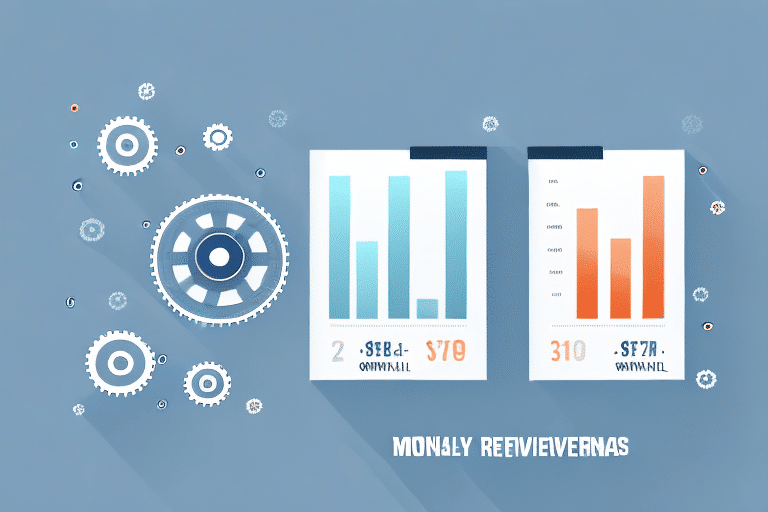Introduction to E-commerce Metrics
Electronic commerce, or e-commerce, has transformed the business landscape by offering efficient and cost-effective ways to buy and sell goods and services online. To ensure the sustainability and growth of an e-commerce business, it is essential to track and analyze key performance metrics regularly. Among these, monthly revenue and Cost of Goods Sold (COGS) stand out as critical indicators of financial health and operational efficiency.
Importance of Monthly Revenue and COGS in E-commerce
Understanding Monthly Revenue
Monthly revenue represents the total income generated by an e-commerce business within a month. This metric is a primary indicator of business performance, reflecting the effectiveness of sales strategies and the overall market demand for products or services. Tracking monthly revenue helps businesses evaluate their growth trajectory and assess whether they are meeting their financial targets.
Role of Cost of Goods Sold (COGS)
Cost of Goods Sold (COGS) refers to the direct costs attributable to the production and delivery of products or services. In e-commerce, COGS includes expenses such as inventory costs, packaging, shipping, and any other costs directly related to fulfilling customer orders. Monitoring COGS is crucial for determining profit margins and ensuring that pricing strategies remain competitive while maintaining profitability.
Difference Between Monthly Revenue and COGS
The primary distinction between monthly revenue and COGS lies in what they measure. While monthly revenue indicates the total income, COGS reflects the costs associated with generating that income. The difference between these two metrics, known as gross profit, provides insight into the profitability of the business operations. A higher gross profit margin signifies better financial health and operational efficiency.
Calculating and Analyzing Monthly Revenue and COGS
How to Calculate Monthly Revenue
Calculating monthly revenue involves summing up all income streams within a month, including product sales, shipping fees, and any other revenue sources. Accurate revenue calculation is essential for assessing business performance and making informed financial decisions.
Calculating COGS
To calculate COGS, add up all the direct expenses related to producing and delivering products or services. This includes the cost of inventory, packaging materials, shipping fees, and any other costs directly tied to fulfilling orders. Regular calculation of COGS helps in maintaining accurate profit margins and identifying areas for cost optimization.
Analyzing the Relationship Between Revenue and COGS
Analyzing the interplay between monthly revenue and COGS provides a comprehensive view of an e-commerce business’s financial performance. For instance, a growing gross margin indicates effective cost management and strong revenue generation, while a declining margin may signal rising costs or decreasing sales.
Key Performance Indicators (KPIs) for E-commerce Success
Customer Acquisition Cost (CAC)
Customer Acquisition Cost (CAC) measures the expenses associated with acquiring a new customer, including marketing and advertising costs. Tracking CAC helps businesses evaluate the effectiveness of their marketing strategies and optimize spending to improve return on investment.
Conversion Rate
Conversion rate indicates the percentage of website visitors who make a purchase. A higher conversion rate signifies a more effective sales funnel and user experience, whereas a lower rate may highlight areas needing improvement.
Average Order Value (AOV)
Average Order Value (AOV) calculates the average amount spent per transaction. Increasing AOV can enhance revenue without necessarily increasing traffic, often achieved through upselling, cross-selling, or bundling products.
Cart Abandonment Rate
Cart abandonment rate measures the percentage of customers who add items to their cart but do not complete the purchase. A high abandonment rate may indicate issues with the checkout process, shipping costs, or overall user experience. Improving this metric can lead to significant revenue increases.
Benchmarking and Industry Standards
Benchmarking against industry standards is essential for evaluating an e-commerce business’s performance relative to competitors. By comparing key metrics such as revenue growth, profit margins, and customer acquisition costs with industry averages, businesses can identify strengths and areas for improvement. Resources like the Statista E-commerce Report provide valuable industry benchmarks and insights.
Strategies to Improve Revenue and Reduce COGS
Enhancing Marketing and Sales Strategies
Optimizing marketing campaigns to target high-converting audiences can boost revenue. Utilizing data analytics to refine targeting and personalize marketing efforts ensures higher engagement and conversion rates.
Optimizing Supply Chain and Inventory Management
Implementing efficient supply chain practices and advanced inventory management systems can reduce COGS by minimizing excess inventory and reducing storage costs. Techniques such as just-in-time inventory can help maintain optimal stock levels.
Negotiating with Suppliers
Building strong relationships with suppliers and negotiating better terms can lower the cost of goods, directly impacting COGS. Bulk purchasing and seeking alternative suppliers for better pricing are effective strategies.
Improving Shipping Efficiency
Streamlining shipping processes and optimizing packaging can reduce shipping costs. Offering incentives like free shipping for minimum order values can also decrease COGS while boosting customer satisfaction.
Overcoming Challenges and Best Practices in E-commerce Metrics
Data Collection and Management
One of the primary challenges in managing e-commerce metrics is accurate data collection and management. Implementing robust data management systems and using reliable analytics tools ensures that data is accurate and actionable.
Skill Development and Training
Hiring skilled personnel and providing ongoing training helps businesses effectively analyze data and make informed decisions based on metric insights.
Leveraging Advanced Analytics
Utilizing advanced data analytics techniques, such as predictive analytics and machine learning, can provide deeper insights into customer behavior and operational efficiencies, enabling more strategic decision-making.
Establishing Comprehensive Reporting Processes
Developing comprehensive reporting frameworks ensures that all relevant metrics are tracked consistently and that insights are disseminated effectively across the organization for informed decision-making.
Conclusion: The Importance of Regularly Monitoring Your E-commerce Operations Metrics
Regular monitoring of key performance metrics like monthly revenue and COGS is indispensable for the success and sustainability of an e-commerce business. These metrics offer critical insights into financial health, operational efficiency, and customer behavior, enabling businesses to make data-driven decisions. By leveraging advanced analytics, optimizing business operations, and adhering to best practices in metric tracking, e-commerce businesses can maintain a competitive edge and achieve sustainable growth.
For more in-depth strategies and industry insights, refer to authoritative sources such as the Shopify E-commerce Metrics Guide and the Harvard Business Review on COGS.






















